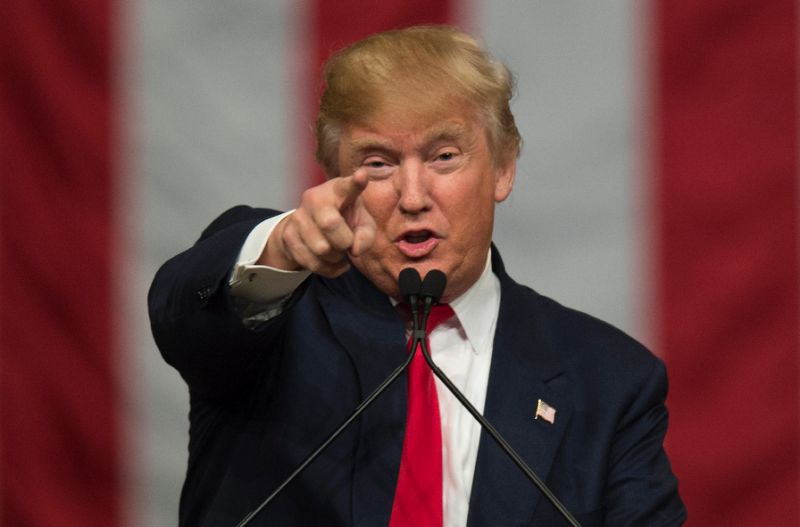President-elect Donald J. Trump is advancing on Washington without backing off one iota from his campaign promises and policy prescriptions – much to the horror of those who were so confident that he would fold up like a cheap suit and play ball with Washington’s UniParty once the election glow faded.
Of course, these are mostly the same folks who said he couldn’t win the nomination to begin with. When found wrong, they doubled down and said he couldn’t win the general election.
Now they’re wrong again.
If anything, the President-elect seems more focused and certain of himself and what he wants to accomplish than ever. His Cabinet choices make that pretty clear.
But waiting for him in Washington like a giant wood chipper is the bloated federal bureaucracy – the guardians of the massive administrative state – who have ground up every President since Reagan, and command legions of compliant politicians.
Part of draining the swamp will be a major commitment to wrest control of the government from unelected bureaucrats who have political protection from the gang on Capitol Hill.
The unelected administrative state – so vast that literally no one even knows where all the nooks and crannies are – has grown faster than Justin Bieber’s tattoo collection. Its explosive growth over the last thirty years has been prodded on by the reckless expansion of four presidents, encouraged by a corrupt political class, and sheltered by a facile and unreliable judiciary.
Their unchecked power is primarily focused in the ability to create and define regulations supporting or detailing the scope of legislation or programs – a power that Congress willingly abrogates to escape hard decisions and political culpability.
Sometimes in league with the Obama Administration and special interest groups, but more often simply “doing what they do,” the administrative state has pumped out a breathtaking 22,000 new federal regulations from 2009 through 2015, with 229 considered “major” rule making; 2016 will add over 80,000 pages in 4,000 new regulations – or burdens more likely.
The cost to the economy of these additional new regulations in the last eight years is $100 billion dollars, according to the Heritage Foundation’s James L. Gattuso and Diane Katz in a May, 2016 study “Red Tape Rising.”
The total cost of all federal regulations to the economy is now calculated to be a staggering $2 trillion dollars a year.
Commensurate with its growth and power, Americans have discovered in recent years that the administrative behemoth becomes more autocratic with its increased girth (think UN or EU here). This massive size and lack of oversight encourages a sense of privilege and invites secrecy, so increasingly the administrative state operates and rules by edict (backed up by dozens of militarized, heavily armed SWAT teams in virtually every non-law enforcement federal agency) with very limited recourse accorded to citizens in the civil judicial system, or through their cowering elected representatives.
And, it takes a lot of unsupervised money to feed this beast, so a great deal of the federal budget is squandered without penalty or accountability. As study after study since the famous Grace Commission report in the 1980’s has demonstrated, you can’t throw a rock in Washington without hitting the front door of an agency or department of the federal establishment that isn’t riddled with waste, fraud, and simple greed. In truth, no one even knows how much of the federal budget is really wasted or pilfered, but you can safely bet it’s enough to run a small nation. So it is not surprising that the administrative state works hard to protect itself from oversight using deception and complexity.
The sweeping regulations of the last eight years alone – if left unchecked – will do untold damage to the economy through self-inflicted inefficiencies and job losses, stupid labor guidelines, massive energy boondoggles, the phantom of so-called climate change, going right down to where and how private American citizens can live or buy houses.
These new, destructive regulatory initiatives in the Obama era are in addition to the Affordable Care Act, or Obamacare. This is the gold standard for deception, written and passed with enormous, open ended rule making authority for the administrative state, which has been busy helping to destroy the American healthcare system.
The Dodd-Frank financial “reform” act – another unread 2,000 pages of legislation – also conferred major regulatory authority to the administrative state.
Dodd-Frank, among its many sins, created the Consumer Financial Protection Bureau (CFPB) – the brainchild of then radical Professor and part-time Native American, and now radical Senator, Elizabeth Warren (D-MA). The CFPB was deliberately placed in the quasi-public Federal Reserve System, where it is virtually a free agent, outside the constitutional system, with negligible Congressional oversight and operating outside the federal budget process. It is the envy of the administrative state, with enormous and unchecked power that is methodically coiling around virtually every financial relationship and interaction that Americans have, or will have.
Besides the weak accountability of rule making beyond the reach of a public veto, there is another danger with the permanent administrative state: The government inevitably wants to govern every citizen on the basis of its own collective or individual biases – which are always the instincts that promote collectivism, not constitutional values.
Americans had a peek at how this danger works out in practical terms (one of many examples that have come to light) in 2014 when the House Oversight and Government Reform Committee issued an investigative report describing how the Federal Deposit Insurance Corporation (FDIC) was in cahoots with the Justice Department in a secret program named Operation Choke Point, to “force” 4,500 FDIC member banks to cut off financial relationships with “payday lenders” and at least 20 other industries – including firearm dealers and manufactures – that the FDIC and Justice deemed “hi-risk” or “morally objectionable.”
The reason they kept the program hidden from the American public was that the two agencies were deliberately colluding to financially ruin legal businesses and industries (in addition to smearing and libeling the targets with false accusations and associations), along with the tens of thousands of jobs supported by those businesses. Shockingly, the fact that these were legal businesses was never discussed in any internal memos, and didn’t even prick the conscience of those involved.
(Finally in January, 2015, the FDIC issued a letter to member banks that admitted its guilt, using a directive that encouraged a return to traditional “risk-based” assessments.)
All of this played a part, of course, in why Donald J. Trump shellacked Hillary Clinton.
Average, hardworking Americans have suffered through more than a generation of an arrogant, power-crazy governing class, who want to micro-manage liberty out of existence. They don’t like it much.
The “forgotten” man has finally had a belly full, and there could be no better time for Mr. Trump to pick a fight with the administrative state – while he has a fair wind at his back.
President-elect Trump and his team have already put together a huge list of regulations to go after. Some can be killed in the crib, internally de-funded or powered down, yet others officially eliminated, and still others legislatively dealt with. But it is an urgent task all across the government.
It won’t be easy – nothing dies without a fight in Washington.
The Congress can and should play apart – for once. They alone have the power of the purse, and the power to legislatively define the scope of how a program operates.
If Congress can ever manage to get back to an actual appropriations process instead of funding the government by Omnibus catch-all budgets, Congress can defund or defang regulations that can, or are, causing great harm to the public, through the budget process. That is their job.
Finally, the Executive branch can push to sunset all regulations and set up filters that test whether existing or proposed regulations benefit the public, or are simply the passions of an administrative state, compelled by their desire to regulate America down to its individual toilet and faucet selections.
Oh, wait, they’ve already done that. There is another one for the list.
Note: [Parts of this article first appeared in 2014. However the impending arrival of President-elect Trump to “drain the swamp” makes the subject timely once more. It is the first opportunity in a generation for reforming the massive, out-of-control Administrative State. MG]

